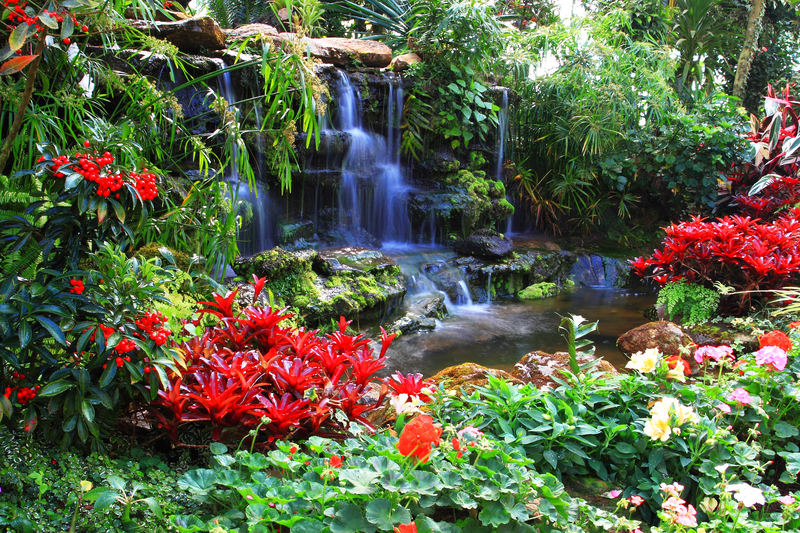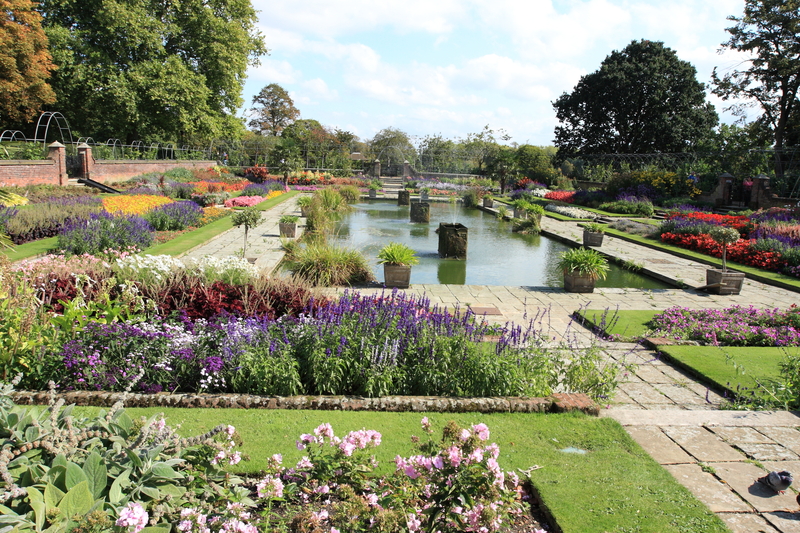Vertical Gardening for Limited Space Enthusiasts
Posted on 01/07/2025
Vertical Gardening for Limited Space Enthusiasts
If you think a tiny balcony or a cramped urban terrace means giving up on your dream garden, think again. Vertical gardening for limited space enthusiasts is rapidly revolutionizing the way people green up their environments. By growing upward, rather than outward, even the smallest nook can become a lush, productive, and beautiful retreat.
What is Vertical Gardening?
Vertical gardening is a method of growing plants on vertically suspended panels, trellises, or stacked containers. Instead of spreading over a flat expanse, plants grow upward, which is perfect for those with restricted ground area. This approach not only saves space but also offers a fresh, modern aesthetic.
Why Choose Vertical Gardens for Small Spaces?
- Maximizes space efficiency: Use walls, fences, and even unused corners to expand your garden vertically.
- Improves air quality: Plants filter toxins, benefiting your indoor or outdoor environment.
- Enhances privacy: Vertical structures can serve as green screens or living fences.
- Reduces soil-borne diseases: Keeping foliage off the ground minimizes risk.
- Biodiversity in minimal areas: Grow a range of plant species in a compact setup.
- Easy maintenance: Less bending, easier access to water and harvest.

Types of Vertical Gardening Systems
There's no one-size-fits-all solution when it comes to vertical gardens. Here are some popular systems ideal for limited space enthusiasts:
1. Wall-Mounted Planters
Wall planters or pocket systems can be attached to any sturdy vertical space. These modular units are perfect for compact balconies or patios, and can host herbs, flowers, or small vegetables. Look for breathable materials and effective drainage.
2. Trellises and Climbing Structures
For vining plants like tomatoes, cucumbers, or passionflowers, a trellis can work wonders. These can be free-standing or wall-mounted, providing strong support and vertical elegance.
3. Stacked and Tiered Planters
Maximize floor space by using tiered containers such as stackable pots or ladder shelves. Each level receives sufficient sunlight, allowing diverse planting in a compact footprint.
4. Hanging Gardens
Hanging baskets or bottle gardens can be suspended from rails, ceilings, or pergolas. They allow for creative arrangements and keep plants safely out of reach from pests or pets.
5. Hydroponic and Aeroponic Towers
For the tech-savvy, try hydroponic vertical towers. These soil-less systems are ideal for growing leafy greens and herbs indoors or outdoors, utilizing nutrient-rich water and ensuring vigorous growth in tiniest of places.
Best Plants for Vertical Gardens in Small Spaces
Choosing the right plants optimizes your success. Consider these options for vertical gardening for small spaces:
- Herbs: Basil, parsley, mint, cilantro, thyme, and oregano thrive in small soil pockets or limited root zones.
- Leafy greens: Lettuce, spinach, rocket, and Swiss chard flourish vertically and offer abundant harvests.
- Strawberries: This fruit adapts well to wall planters and hanging pots.
- Succulents: Minimal water needs and varied shapes make them perfect for artistic wall pieces.
- Vining veggies: Pole beans, peas, cucumbers, and squash can be guided up supports.
- Ornamentals: Ferns, pothos, philodendrons, and petunias create vibrant green living walls.
Steps to Create Your Own Vertical Garden
Creating a vertical garden isn't just for expert gardeners. With some planning and creativity, anyone can design a thriving oasis--even with limited square footage.
Step 1: Assess Your Space
Start by evaluating available walls, balconies, fences, or railings. Note how much sunlight and wind exposure the zone receives. For north-facing or heavily shaded areas, choose shade-loving plants; maximize sunny walls for vegetables and herbs.
Step 2: Choose Your Vertical System
Think about your budget, aesthetic, and DIY skill level. A purchased modular system offers ease, but DIY structures using recycled materials (like pallets or guttering) can be cost-effective and eco-friendly.
Step 3: Select Suitable Plants
Match plants to the light, water, and wind conditions you've identified. Mix edibles and ornamentals for visual interest and functionality.
Step 4: Install Your Structure
- Ensure strong support: The system should be securely attached, especially once loaded with soil and water.
- Use quality potting mix: Lightweight, well-draining, and nutrient-rich soil is essential for vertical gardens.
- Incorporate irrigation: Drip or self-watering systems reduce maintenance and keep plants healthy.
Step 5: Plant and Maintain
- Plant densely: Fill every pocket for lush growth and to shade soil surfaces.
- Fertilize regularly: Limited soil means limited nutrients; consider slow-release or liquid feeds.
- Prune and monitor: Remove dead leaves, and keep an eye out for pests or signs of drought.
Creative DIY Vertical Gardening Ideas for Space-Savvy Growers
Vertical gardening for limited spaces doesn't need to be expensive or complicated. Here are some inventive, budget-friendly ideas:
- Pallet gardens: Old wood pallets make perfect wall gardens for annual flowers or herbs. Sand, paint, and attach fabric backing for soil support.
- Shoe organizers: Hang a canvas or plastic shoe organizer on a sunny wall, fill pockets with soil, and use for greens or strawberries.
- Plastic bottles: Repurpose bottles as mini planters by cutting an opening and fixing them horizontally to a wall or fence.
- Gutter gardens: Attach old gutters horizontally on a wall or fence for a sleek tiered herb garden.
- Ladder shelves: Lean a stepladder against a wall, adding planks across the steps for a stylish multi-level display.
Tips for Success with Vertical Gardening in Small Spaces
- Plan for sunlight: Most edibles need at least 4-6 hours of sunlight. Adjust your plant choices and garden location accordingly.
- Water wisely: Vertical gardens may dry out faster; use self-watering pots, add mulch, or install a drip system for best results.
- Support healthy growth: Use stakes, ties, or mesh nets for vining or heavy plants.
- Rotate and replant: Change up your plantings seasonally to keep the garden looking fresh and productive.
- Keep it accessible: Place your garden at a comfortable height for easy maintenance and harvesting.
The Aesthetics of Small Space Vertical Gardens
A well-designed vertical garden is more than a practical solution--it becomes a stunning living tapestry. Combine textures, leaf colors, and flower types for visual variety. Mix edible and ornamental plants for a functional work of art that enhances your home, both inside and out.
Common Challenges and How to Overcome Them
While vertical gardening for space-limited enthusiasts is rewarding, there are unique challenges:
- Drying out: Minimize this by using moisture-retentive soil, grouping thirsty plants together, and considering self-watering systems.
- Structural Limits: Make sure your wall or fence can bear the extra weight of soil and water--reinforce if needed.
- Pest problems: Verticality can reduce some ground pests, but be mindful of aphids or spider mites. Inspect regularly and use natural controls as needed.
- Root crowding: Plants in small pockets may outgrow their space quickly. Prune roots during repotting, and choose appropriately sized varieties.
Vertical Gardening Indoors: A Space-Saver's Dream
Indoor vertical gardens have surged in popularity for apartment dwellers and office workers alike. Consider these tips to make the most of your interior space:
- Lighting: If natural light is scarce, supplement with grow lights to keep your plants healthy and lush.
- Airflow: Indoor gardens benefit from fans and open windows to prevent mold and mildew.
- Appropriate plants: Spider plants, peace lilies, pothos, and snake plants are among the best choices for limited-light conditions.

Frequently Asked Questions about Vertical Gardening in Limited Spaces
Which vegetables grow best in vertical gardens?
Compact or vining varieties such as lettuce, spinach, bush beans, cherry tomatoes, and cucumbers excel in vertical setups.
How often should I water my vertical garden?
It depends on the plant types and weather conditions. Generally, vertical gardens need more frequent, lighter watering. Always check soil moisture before adding water.
Can I build a vertical garden indoors?
Absolutely! With the right lighting, potting mix, and plant choice, vertical gardening indoors is not just possible but can dramatically enhance your living space and air quality.
Do vertical gardens damage walls?
Properly installed vertical systems with waterproofing and adequate drainage will not damage walls. Consider a moisture barrier or backing board when installing indoors.
How do I ensure my vertical garden thrives?
Sun, water, nutrients, and regular maintenance are key. Choose sturdy structures and hardy, appropriate plants for your climate and space.
Conclusion: Transform Your Space with Vertical Gardening
Vertical gardening for limited space enthusiasts unlocks a world of possibilities for growing food, flowers, and greenery--even where horizontal room is lacking. By choosing creative systems, selecting the best plants, and following key tips, you can turn the smallest space into a vibrant living wall. Embrace the vertical revolution--your home and wellbeing will flourish!
Ready to get started? Whether indoors or outdoors, every wall can transform into a green oasis. Gather your materials, dream up your designs, and watch your vertical garden come to life--no matter how limited your space!

